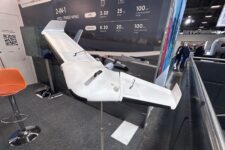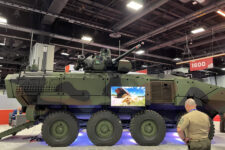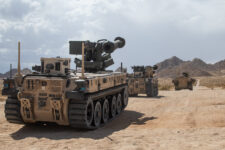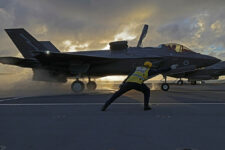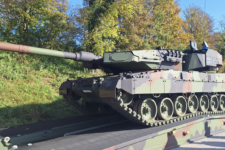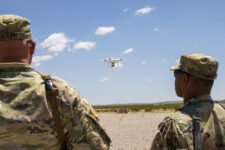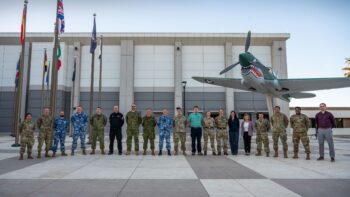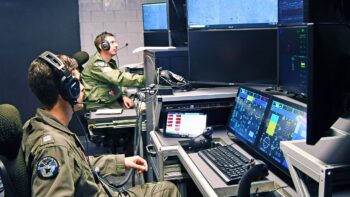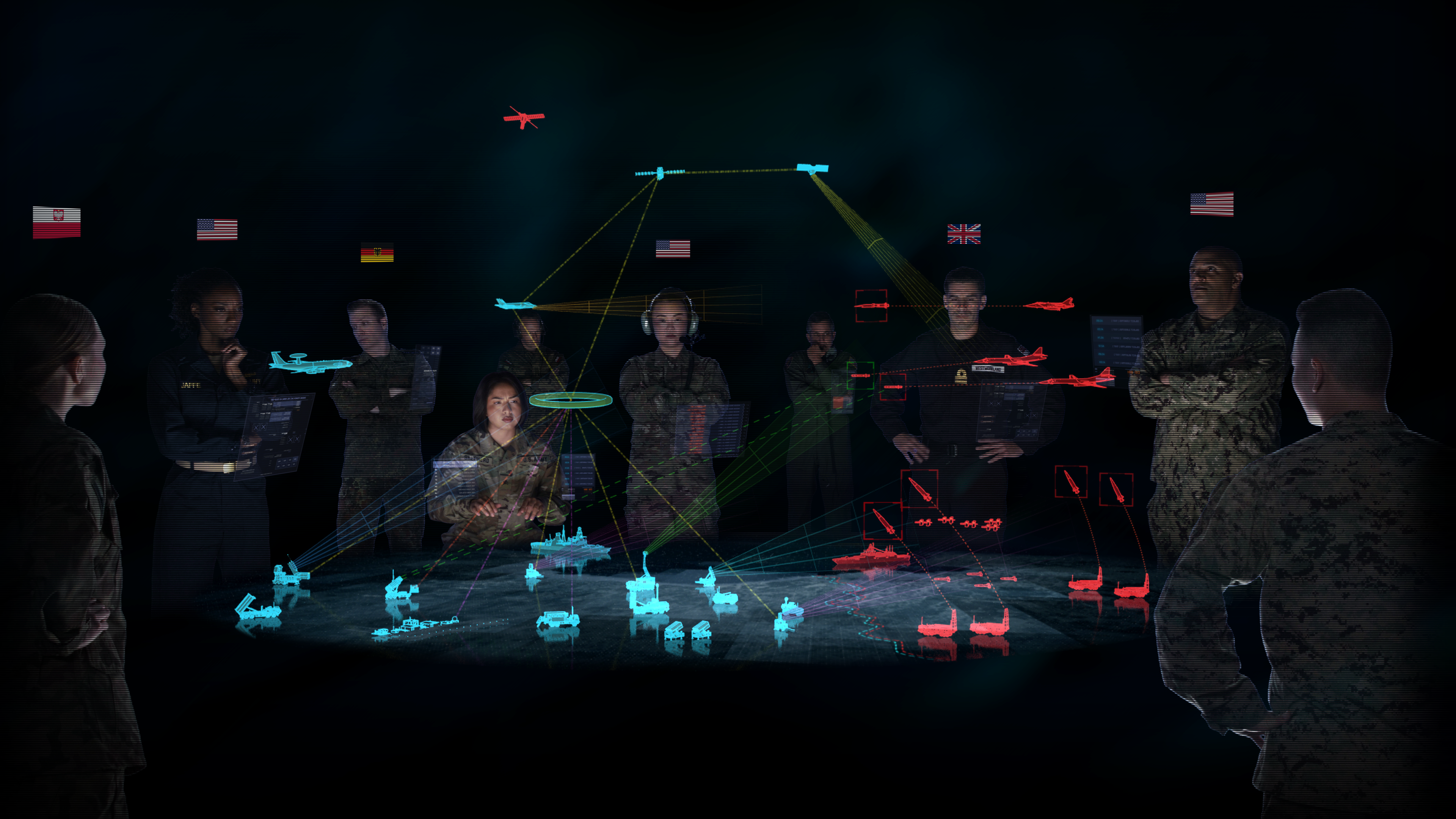
IBCS revolutionizes interoperability and integration across all domains, delivering advanced warfighter capabilities. Image courtesy of Northrop Grumman.
In this Q&A with Rebecca Torzone, vice president and general manager, Combat Systems and Mission Readiness, Northrop Grumman, we discuss how IBCS is:
- Powering the connected battlespace of the future;
- Unifying data across systems to enable quick decision making; and
- Already being fielded in Poland.
Breaking Defense: What is NGC’s vision for the connected battlespace?

Rebecca Torzone, vice president and general manager, Combat Systems and Mission Readiness, Northrop Grumman.
Torzone: Let me share this in the context of how previous conflicts were fought and the geopolitical environment we see today. In terms of capability, conflicts of the past were very much singularly focused. Often, they occurred in one geographic region and were fought by one service. Missions were managed by a single system operating in one domain. For each mission there was one system that enabled decision making and the system was limited to the data in which it singularly collected. If you had more than one mission, you would need a separate system for each mission.
As we look at the needs of today’s commanders and toward the potential of future conflict, it’s a multi-service, multi-coalition, and multi-domain environment. Our systems must be integrated across multi-service and multi-domain — from space to cyber, air, land, and undersea. It’s critical to get the data across those domains into the hands of a decision maker so they can quickly make decisions based on that data and with weapon inventory awareness and responsibility so that the fight can be sustained over time.
This complex threat environment means we need to build systems that can not only defend against the threats that exist today, but also against the threats that we don’t even know about yet. We must build flexibility into these systems to empower us to pivot in the field based on what we’re learning in that agile and complex environment.
In the wars of yesteryear, the data and the system were geographically co-located. In the battlespace of the future, they will be distributed. Data no longer needs to be co-located with the system in order for the system to integrate it and provide the warfighter, decision maker, or commander the information they need to make decisions.
The connected battlespace also must take into account the geopolitical environment and the way we work alongside our allies and coalition partners. Beyond just integrated systems and capability, there must be interoperability with U.S. armed forces and any of our coalition partners and allies.

IBCS’s innovative, game-changing technology adapts and integrates multi-domain sensors and weapons to optimize threat response. Image courtesy of Northrop Grumman.
Breaking Defense: That leads us to a discussion of IBCS, which addresses many of the present and future-day warfighting needs that you described.
Torzone: A system like IBCS combines all those capabilities together, revolutionizing how joint and coalition forces interoperate and integrate across all domains. IBCS is the cornerstone of the Army’s modernization program, and it’s also transformational as the centerpiece of their integrated air and missile defense solution due to its ability to seamlessly connect any platform, any sensor, and best effector. IBCS revolutionizes command and control by unifying available and future assets in the battlespace, regardless of source, service or domain to optimize threat response.
That seamless connection across the battlespace is what the heart of this system does. With IBCS, the data and the system do not need to be co-located. The system creates an integrated, single and actionable picture of the battlespace across all domains empowering operational commanders to make real-time battle decisions which lead to more efficient and cost effective use of weapons inventory, creates more decision time, and significantly increases the success of defeating the threats.
Pulling the bigger thread, while IBCS in today’s world is very much focused on that integrated air and missile defense mission, it is also going to become the centerpiece of the U.S. Army’s contribution to the JADC2 architecture. IBCS serves as the backbone to our vision of the future as one connected battlespace. We’re already seeing now how a connected battlespace must include data from the depths of sea to the vastness of space, and that’s what we are able to do with IBCS. It is a multi-domain solution, fusing the information received from land, air, sea, space, and cyber domains into actionable data.
Going further on this vision of the future, it’s critical that all services, all allies, all together can share data to make rapid decisions. IBCS, in order to service all of that, is open, modular, and scalable. Because, again, when you think about preparing for threats that we don’t even know exist today, we need an agile system like IBCS that can be updated in real time. IBCS was designed to scale and connect with any system.
We must be able to go into any situation, and not only connect with the systems that we know IBCS will integrate with, but with ones that are native to a specific country. We must be able to be unified in the field, quickly and easily – and IBCS does that. Countries with IBCS will see the same air picture and can integrate their air and missile defense capabilities while retaining their sovereign control of kill-chain decisions.
Over the course of the last few years through all the testing rigor, we’ve been able to demonstrate how IBCS can work across the services. While it is an U.S. Army system, we’ve successfully demonstrated how it connects both to Air Force and Marine Corps systems. We’ve shown how it integrates with our allies, and we’ve demonstrated core capabilities like modularity and open-system architecture.
When you think about a joint force commander sitting in an operations center, we don’t even know today whether that commander is going to have a U.S. flag or if it’s going to be a flag of another country. Being able to have an integrated air picture with our coalition forces will give that commander reliable, actionable information for wartime decision making across a wide range of sensors and effectors.
At the same time, IBCS extends beyond a common operational picture. Harnessing the power of a connected battlespace, the capacity to defend more of the battlespace is another game-changer. The joint force will gain more coverage with existing systems that have already been acquired; IBCS is a force multiplier by gaining economies of force, greater magazine depth, and higher performance-per-dollar. It’s the ability to create fire-control quality data and get that data onto the network so other services can take that data and place an effector onto the target. We’ve demonstrated IBCS can do just that.
Here at Northrop Grumman, we talk about transforming decision making, and that’s exactly what IBCS does.
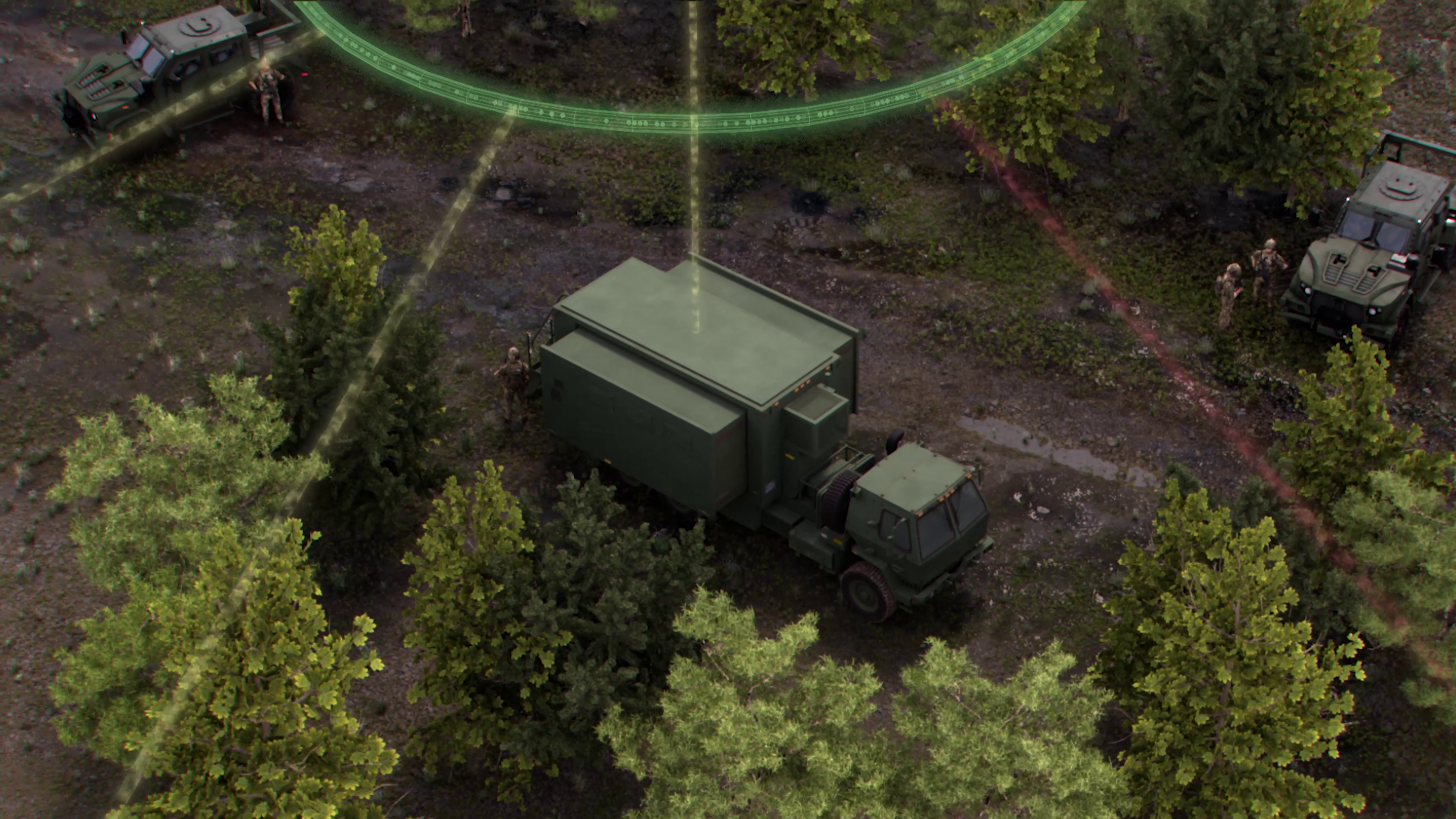
Powering unprecedented multi-domain integration, IBCS transforms the battlespace by creating a single, integrated and actionable picture of the battlespace, empowering operational commanders to make real-time battle decisions. Image courtesy of Northrop Grumman.
Breaking Defense: IBCS has achieved IOC from the Army and fielding is next. Tell us about that.
Torzone: That’s a huge milestone for any developmental program, and with the backdrop of what’s happening in the world today it couldn’t be more timely. IBCS is ready to be fielded to Army units to further support the development of the system’s transformational capability. Once fielded, the service will be able to defend more assets with the same size force, or even consider a reduction in force and equipment due to increased digital capability, and extend the time needed for these critical decisions – going from seconds to minutes – and eliminate single points of failure from current systems. All of that will lead to greater success in defeating threats.
We’re currently in Low-Rate Initial Production and working collaboratively with the U.S. Army to make sure we are ramping up our production capability and doing it on a schedule that meets their fielding demand. We’re working closely with them to make sure they have the right number of systems at the right place in the world when they need it.
At the same time, because we’re ramping up for full-rate production (FRP) after achieving the FRP decision in April 2023, we’re making sure our supply chain is resilient, our production lines are ready to produce at capacity. We’ve got the skills, we’re doing it with efficiency, and we’ve got the talent to support. And internationally we already are delivering systems and are seeing additional demand signal from our allies and coalition partners telling us this capability is going to be in strong demand for many years to come all over the world.
Now that the IBCS production line is set, it offers the ability for these countries to work with the U.S. and leverage that production line. We’ve been in conversations with the United Kingdom, Japan, and Korea, and earlier this year held a successful demo in Germany in which we had eight NATO partners in attendance to see the capability of the system. There is great enthusiasm worldwide for how IBCS transforms the battlespace.
Poland selected IBCS as the centerpiece of their air and missile defense modernization, becoming the first international partner to acquire this transformational capability. We delivered the first batteries of the system earlier this year, and they achieved Basic Operational Capability in August 2023, which is within just five months of the system’s delivery to Poland. This milestone showcases the speed by which IBCS can begin to power multi-domain operations. We’ve also been working closely with the Polish Army to train their military on how to use the system.
Breaking Defense: Final thoughts?
Torzone: IBCS is a transformational command and control capability for integrated air and missile defense that has extensibility into other mission sets. It’s also an enabling technology for JADC2 and multi-domain operations. The game-changing approach of IBCS is already enabling that multi-domain future by enabling fast and more accurate joint decisions to take out any threat.
IBCS is the cornerstone for interoperability within the joint force. When you think about a hub-and-spoke system, IBCS becomes the hub. All of the data is coming in, it’s getting fused, sense is being made of that data, and then it’s being put in front of the commander to make the right decision in the right time frame.
Again, painting a picture of a joint operational center where you not only have U.S. multi-service warfighters but also allies and partners, IBCS can fuse and track data together so there is an integrated picture of the battlespace. Everyone will be able to look at the same data, talk about the decision that needs to be made, select the best shooter, and come out more resilient against tomorrow’s threats.
At the end of the day, IBCS is going to transform the way our warfighters make wartime decisions for joint operations



